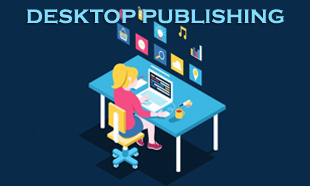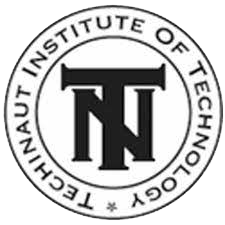0
Desktop Publishing" course at Verma Computer Institute, Hazratganj, Lucknow, Uttar Pradesh, affiliated with Techinaut Institute of Technology, provides comprehensive training in graphic design software, layout techniques, and printing processes, preparing students for careers in publishing and media industries.
DESKTOP PUBLISHING
Verma Computer Institute, situated in Hazratganj, Lucknow, Uttar Pradesh, is renowned for offering high-quality computer education. This comprehensive review focuses on the six-month Desktop Publishing (DTP) course provided by Verma Computer Institute, a Techinaut Institute of Technology franchise. The course aims to equip students with the necessary skills and knowledge to excel in desktop publishing, empowering them to create professional-quality publications and graphics.
THE OBJECTIVE OF THE COURSE:
The primary objective of the Desktop Publishing course at Verma Computer Institute is to train students in the art and science of creating visually appealing publications using computer software tools. Throughout the six-month duration, students undergo comprehensive training covering computer fundamentals, operating system navigation, printing processes, DTP fundamentals, and hands-on experience with industry-standard software applications. The course prepares students for graphic design, publishing, advertising, and media production careers.
Section 1: Computer Fundamentals
This section provides students with a solid foundation in computer basics, essential for understanding desktop publishing concepts and techniques. Topics covered include:
Introduction to Computers: Students learn about the essential components of a computer system, including hardware, software, input devices, output devices, and storage devices. They also explore the evolution of computers and their impact on society and industry.
Computer Hardware and Software: Students gain an understanding of computer hardware components, such as the CPU, memory, storage devices, and peripherals. They also learn about different types of software, including operating systems, application software, and utilities.
Section 2: Operating System: DOS and MS Windows
Building upon the basic understanding of computers, this section focuses on operating system navigation and functionality. Topics covered include:
Introduction to Operating Systems: Students learn about operating systems' purpose and functions, including managing hardware resources, providing user interfaces, and running application software. They also explore different types of operating systems, such as DOS and MS Windows.
DOS Commands: Students learn to use DOS commands to perform file management, disk operations, and system configuration tasks. They know how to navigate the DOS command prompt, execute commands, and troubleshoot common issues.
MS Windows Navigation: Students learn essential navigation techniques for MS Windows, including using the Start menu, taskbar, file explorer, and control panel. They also explore customization options and accessibility features to tailor the Windows environment to their preferences.
Section 3: Printing Process
This section covers the printing process and its importance in desktop publishing. Topics covered include:
Introduction to Printing: Students learn about the printing process, including prepress preparation, printing techniques, and post-press finishing. They also explore different printing methods, such as offset, digital, and screen printing.
Print Media: Students gain an understanding of different types of print media, including newspapers, magazines, books, brochures, flyers, and posters. They learn about the characteristics of each type of print media and their suitability for different purposes.
Section 4: DTP Fundamentals
This section introduces students to desktop publishing fundamentals, including layout design, typography, and graphic design principles. Topics covered include:
Layout Design Principles: Students learn about layout design principles, including balance, contrast, alignment, proximity, and repetition. They explore how to create visually appealing layouts that effectively communicate information to the audience.
Typography: Students gain an understanding of typography principles, including font selection, pairing, sizing, and styling. They learn to use typography effectively to enhance readability and convey meaning in publications.
Graphic Design Principles: Students learn about graphic design principles, including colour theory, composition, visual hierarchy, and branding. They explore using graphics, images, and illustrations to create engaging and impactful designs.
Section 5: Using MS Word
This section focuses on using Microsoft Word for desktop publishing tasks. Topics covered include:
Document Setup: Students learn how to set up documents in Microsoft Word for desktop publishing projects, including page size, margins, orientation, and page layout options.
Text Formatting: Students gain proficiency in formatting text in Microsoft Word, including font selection, styling, alignment, spacing, and indentation. They also learn how to create and apply styles to maintain consistency throughout a document.
Inserting Graphics: Students learn to insert graphics, images, and illustrations into Microsoft Word documents. They explore techniques for resizing, positioning, and wrapping text around graphics to create visually appealing layouts.
Section 6: Adobe PageMaker
This section introduces students to Adobe PageMaker, a popular desktop publishing software application. Topics covered include:
Introduction to Adobe PageMaker: Students learn about the features and functionalities of Adobe PageMaker, including layout tools, text formatting options, and graphic design tools.
Document Layout: Students gain proficiency in creating and designing layouts in Adobe PageMaker, including setting up pages, adding text boxes, importing graphics, and applying master pages.
Typography and Graphics: Students learn to use typography and graphics effectively in Adobe PageMaker to create visually appealing publications. They explore techniques for formatting text, applying styles, and enhancing graphics.
Section 7: QuarkXPress
This section focuses on using QuarkXPress, another industry-standard desktop publishing software application. Topics covered include:
Introduction to QuarkXPress: Students learn about the features and functionalities of QuarkXPress, including layout tools, typography options, and graphic design capabilities.
Document Setup: Students gain proficiency in setting up documents in QuarkXPress for desktop publishing projects, including page size, margins, columns, and guides.
Layout Design: Students learn how to create and design layouts in QuarkXPress, including arranging text and graphics, applying styles, and adjusting layout elements for visual appeal.
Section 8: Using CorelDRAW
This section introduces students to CorelDRAW, a vector graphics editor widely used in desktop publishing. Topics covered include:
Introduction to CorelDRAW: Students learn about the features and functionalities of CorelDRAW, including drawing tools, object manipulation options, and text formatting capabilities.
Vector Graphics: Students gain proficiency in creating and editing vector graphics in CorelDRAW, including shapes, lines, curves, and fills. They also learn to use layers and grouping to organize and manage graphics elements.
Typography and Layout Design: Students explore typography and layout design techniques in CorelDRAW, including formatting text, applying effects, and arranging text and graphics elements for visual impact.
Section 9: Adobe Illustrator CS
This section focuses on Adobe Illustrator CS, a vector graphics editor that creates illustrations and artwork. Topics covered include:
Introduction to Adobe Illustrator: Students learn about the features and functionalities of Adobe Illustrator CS, including drawing tools, object manipulation options, and colour management capabilities.
Drawing and Editing: Students gain proficiency in drawing and editing vector graphics in Adobe Illustrator, including shapes, paths, and anchor points. They also learn to use brushes, gradients, and effects to enhance illustrations.
Typography and Graphic Design: Students explore typography and graphic design techniques in Adobe Illustrator, including formatting text, creating logos, and designing artwork for print and digital media.
Section 10: Adobe Photoshop CS
This section focuses on Adobe Photoshop CS, a raster graphics editor for photo editing and digital artwork. Topics covered include:
Introduction to Adobe Photoshop: Students learn about the features and functionalities of Adobe Photoshop CS, including image editing tools, layer management options, and colour correction techniques.
Image Editing: Students gain proficiency in editing and retouching images in Adobe Photoshop, including cropping, resizing, adjusting colours, and removing imperfections. They also learn to use selection tools and masks to isolate and manipulate image elements.
Graphic Design and Digital Artwork: Students explore graphic design and digital artwork techniques in Adobe Photoshop, including creating illustrations, designing posters, and composing digital collages. They also learn to work with text layers, shapes, and filters to create visually stunning compositions.
CONCLUSION:
The Desktop Publishing course offered by Verma Computer Institute provides students comprehensive training in desktop publishing tools and techniques. Students acquire the skills and knowledge necessary to create professional-quality publications and graphics through a structured curriculum covering computer fundamentals, operating system navigation, printing processes, DTP fundamentals, and hands-on experience with industry-standard software applications. Graduates of the course emerge as proficient desktop publishers, equipped to pursue careers in graphic design, publishing, advertising, and media production.


